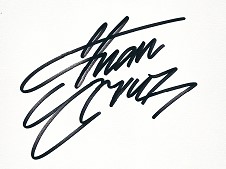How do you choose the right laser engraving equipment for different woodworking projects?
Choosing the right laser engraving equipment for different woodworking projects involves several key considerations, based on my experience and the insights gained from various sources like Opt Lasers and others. Here’s how I approach this decision:
Material Compatibility: Different woods have varying reactions to laser engraving. Hardwoods, softwoods, and composite woods each respond differently. Ensure the laser is suitable for the types of wood you typically work with. Opt Lasers, for example, offers a range of laser heads that are effective on diverse wood types.
Laser Power and Speed: The power of the laser determines how deeply it can engrave or cut the wood. Higher-powered lasers can cut thicker materials more efficiently, but for finer, more detailed engraving, a lower power setting may be more suitable. The speed of the laser also impacts the quality of the cut or engraving.
Size of the Working Area: Consider the size of the projects you undertake. Larger projects require a laser with a bigger working area. However, for small, detailed work, a smaller laser might be more appropriate. It's about matching the engraver’s capacity to your project scale.
Resolution and Precision: The laser’s resolution, often measured in DPI (dots per inch), affects how detailed the engraving can be. For projects requiring high detail, look for a laser that offers high-resolution capabilities.
Ease of Use and Software Compatibility: User-friendly interface and software compatibility are important. Check if the laser engraving equipment comes with intuitive software or is compatible with commonly used design software. This is crucial for intricate designs and detailed work.
Safety Features: Safety is paramount. Ensure the laser equipment has adequate safety features like protective casing, emergency stop buttons, and fume extraction systems, especially when working in smaller, enclosed spaces.
Durability and After-Sales Support: Consider the build quality and reliability of the equipment. Also, good after-sales support from the manufacturer, like that provided by Opt Lasers, is essential for maintenance and troubleshooting.
Budget: Finally, balance all these factors against your budget. While it’s tempting to go for a cheaper option, investing in a quality laser engraver that meets your needs can save you money and time in the long run.
In summary, the right laser engraving equipment for a woodworking project depends on the specific requirements of the project, the types of wood being used, and the desired outcomes in terms of quality and detail. Balancing these factors with considerations of budget and safety will guide you to the appropriate choice.


